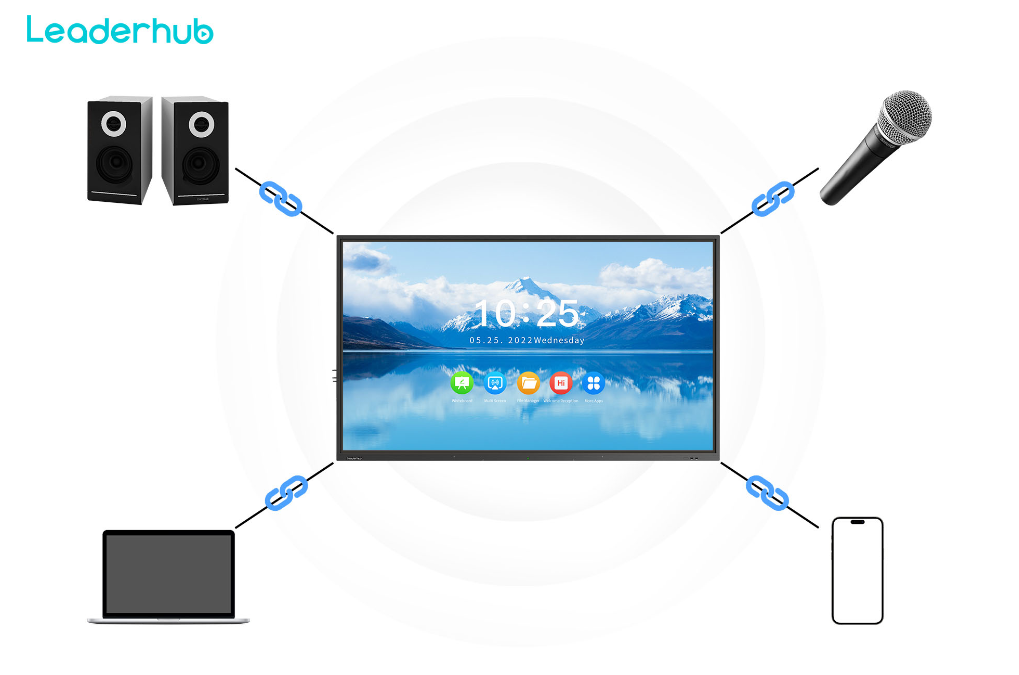Interactive whiteboards have transformed traditional classrooms into dynamic learning environments by fostering student-centered learning approaches. By engaging students actively in the learning process, interactive whiteboards promote collaboration, critical thinking, and creativity. Let's explore how interactive whiteboards contribute to student-centered learning:
Active Participation:
Interactive whiteboards encourage active participation by allowing students to interact directly with the content being presented. Whether it's dragging and dropping objects, writing annotations, or solving interactive quizzes, students are actively engaged in the learning process, rather than passively absorbing information.
Visual and Interactive Learning:
Visual and interactive learning experiences are facilitated through interactive whiteboards, which allow teachers to present information in a variety of formats, including text, images, videos, and animations. This multisensory approach appeals to different learning styles and helps reinforce concepts through hands-on exploration and manipulation.
Customization and Personalization:
Interactive whiteboards enable teachers to customize lessons and adapt content to meet the diverse needs and interests of their students. Teachers can tailor presentations to accommodate different learning paces, preferences, and abilities, ensuring that each student receives personalized instruction and support.
Collaborative Learning:
Interactive whiteboards promote collaborative learning by facilitating group activities, discussions, and problem-solving exercises. Students can work together on interactive tasks, share ideas, and collaborate on projects in real time, fostering teamwork and communication skills.
Immediate Feedback:
Interactive whiteboards provide immediate feedback to students, allowing them to assess their understanding and progress instantly. Quizzes, polls, and interactive activities can be used to gauge student comprehension, identify misconceptions, and address any areas of difficulty promptly.
Engagement and Motivation:
The interactive and multimedia-rich nature of interactive whiteboards captivates students' attention and motivates them to participate actively in lessons. Interactive elements such as games, simulations, and virtual tours create an immersive learning experience that captures students' interest and curiosity.

Differentiation and Flexibility:
Interactive whiteboards offer flexibility and adaptability, allowing teachers to differentiate instruction and cater to individual learning needs. Teachers can modify the pace, content, and level of difficulty of lessons to accommodate students with varying abilities, learning styles, and preferences.
Real-World Connections:
Interactive whiteboards facilitate real-world connections by integrating multimedia resources, such as videos, websites, and virtual field trips, into lessons. By contextualizing learning within relevant and meaningful contexts, interactive whiteboards help students make connections between classroom concepts and their everyday lives.
Critical Thinking and Problem-Solving:
Interactive whiteboards promote critical thinking and problem-solving skills by presenting students with interactive scenarios, case studies, and simulations. Students are challenged to analyze information, make decisions, and apply their knowledge to solve problems, fostering higher-order thinking skills.
Assessment and Progress Monitoring:
Interactive whiteboards support assessment and progress monitoring by enabling teachers to collect real-time data on student performance and participation. Teachers can use built-in assessment tools, such as quizzes and polls, to gauge student understanding and adjust instruction accordingly.
In conclusion, interactive whiteboards play a crucial role in promoting student-centered learning by fostering active participation, visual and interactive learning, customization and personalization, collaborative learning, immediate feedback, engagement and motivation, differentiation and flexibility, real-world connections, critical thinking and problem-solving, and assessment and progress monitoring. By leveraging the interactive capabilities of whiteboards, teachers can create dynamic and engaging learning experiences that empower students to take ownership of their learning and achieve academic success.

